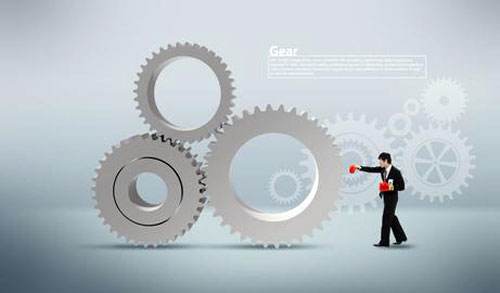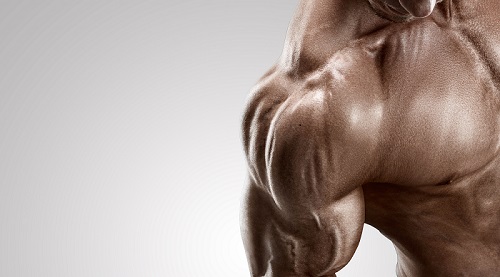
当前课程知识点:History of Western Civilization 全英文西方文明史 > Chapter 8 West in the Eighteenth Century > 8.3 The French Revolution > 8.3.1 Text
返回《History of Western Civilization 全英文西方文明史》慕课在线视频课程列表
8.3 French Revolution
Hi, guys. This is the third part of Chapter 8—the French Revolution.
1. France, officially the French Republic is a sovereign state, and unitary semi-presidential republic. French territory consists of Mainland France in Western Europe and several overseas regions and territories. The Mainland France extends from the English Channel and the North Sea to the Mediterranean Sea, from the Atlantic Ocean to the Rhine River in the east, bordered by Belgium, Luxembourg and Germany to the northeast, Switzerland and Italy to the east, and Spain to the south. Corsica, the island in the Mediterranean Sea also belongs to France. France has a population of 67.3 million, its capital Paris is the country's largest city and cultural and commercial center. The capital city of France is Paris, the economic and cultural center. Other major cities include Lille, and also Lyon, and Nice, and Marseille, and Toulouse, and Bordeaux which is famous for Bordeaux wine.
2. Let’ see the symbols of France. The Louvre Museum is the world's largest art museum and a historic monument.
3. The Eiffel Tower built as the entrance to the 1889 World's Fair, Arc de Triomphe, the Arch of victory honors those who fought and died in the French Revolution and Napoleonic Wars. The street is called Champs Elysees, a 1.9 kilometer long avenue, known for theatres, cafés, and luxury shops, for the annual Bastille Day military parade, and final of the Tour de France bicycle race.
4. Liberty Leading the People
This painting is called Liberty Leading the People a painting by Eugène Delacroix commemorating the French Revolution of 1830, also known as the July Revolution which toppled King Charles X of France. Marianne, Goddess of Liberty, a national symbol of the French Republic, is holding the flag of the French Revolution, the Tricolor. When I visited the Louvre Museum, I didn’t get closer to the Mona Lisa, too crowded! I was lucky to face this painting alone for a few minutes. What came to my mind is the street fighting described by Victor Hugo in his novel Les Misérables, which means a miserable world.
5. The national motto of France is "Liberty, Equality, Fraternity". Fraternity is friendship, brotherhood or universal love.
The national anthem of France is La Marseillaise, the lyric was written in 1792 by de Lile, an officer of the French Revolutionary Wars. The song reflected the invasion of France by foreign armies from Prussia and Austria that were under way when it was written.
Arise, children of our Nation,
The day of glory has arrived!
Against us tyranny's
Bloody banner is raised,
Do you hear, in the countryside,
The roar of those ferocious soldiers?
They're coming right into your arms
To cut the throats of your sons, your women!
To arms, citizens,
Form your battalions,
Let's march, let's march!
Let an impure blood
Soak our fields!
Let’ listen to it.
6. Now let’s look at the Chinese national anthem, March of the Volunteers
Written by Tian Han in 1934 during the War of Resistance Against Japan and set to music by Nie Er.
Arise, ye who refuse to be slaves!
With our flesh and blood,
let us build a new Great Wall!
As China faces its greatest peril
From each one the urgent call to action comes forth.
Arise! Arise! Arise!
Millions of but one heart
Braving the enemies' fire! March on!
Braving the enemies' fire! March on!
March on! March, march on!
Do you think the national anthem of China, the United States and France have the same spirit? That is the spirit of patriotism; they are all calling people to fight for the motherland when it is in danger. To me they are the 3 greatest national anthems in the world, of cause the number one is ours.
7. before the Revolution
"France" comes from the Latin term "Francia", country of the Franks. The Kingdom of the Franks was the largest Barbarian kingdom in Western Europe during the Early Middle Ages which lasted from 481 to 843. It is the direct ancestor of both modern France and Germany. The Kingdom of the Franks went through the Merovingian and Carolingian Dynasty. From 800 it became the Holy Roman Empire and Charlemagne became the first Holy Roman Emperor. Charlemagne died in 814, and his son Louis the Pious succeeded. After the death of Louis in 843 the empire was divided by his three sons. In the future the West Franks became France, the east became Germany, and the middle became Holland, Belgium, Luxembourg, Lorraine, Switzerland and northern Italy.
The Carolingian dynasty ended in the West Francia in 987 when Hugh Capet became the first King of a Capetian dynasty. The Capetians and their cadet lines the Valois and Bourbon ruled France until 1792. In 1328 Philip VI was the first king of the House of Valois, his succession caused the Hundred Year’s War, this family ruled until 1589. After French war of religion 1562-1598, Henry IV became the first king from the House of Bourbon, Henry’s grandson Louis XIV the Sun King ruled for 72 years from 1643 to 1715 and he consolidated absolute monarchy and France became the leading European power.
8. In 1715 Louis XV succeeded his great-grandfather Louis XIV at the age of five until his death in 1774. After the death of his chief minister Cardinal Fleury in 1726, the young king took sole control of the kingdom. His reign of almost 59 years was the second longest in the history of France, exceeded only by Louis XIV. During his reign France lost the Seven Years' War, ceded New France in North America to Great Britain. He annexed the territories of the Duchy of Lorraine and the Corsican Republic into the Kingdom of France. Louis XV left a huge debt to his grandson Louis XVI, the next king.
Louis XVI was 20 years old when he became the king. He was the last King before the fall of the monarchy during the French Revolution. He was called Citizen Louis Capet during the four months before he was guillotined in 1793. From 1776, Louis XVI actively supported the American independence war against Great Britain. He already had a huge debt left by Louis XV, supporting the Americans made the financial crisis worse.
9. General Marquis de Lafayette was sent to fight in the American Revolutionary War, after returning to France he became a key figure in the French Revolution of 1789 and the July Revolution of 1830. This painting showed Lafayette and Washington at Valley Forge. On the right is Lafayette.
10. The French Revolution from 1789 to 1799 is one of the greatest revolutions in the human history. It happened 6 years later of the victory of the American Revolution in 1783. Thomas Jefferson proclaimed France had "been awakened by our Revolution."
Inspired by Enlightenment ideals, the Revolution overthrew the monarchy, established a republic, and also experienced violent periods of political turmoil. The greatest contribution of the revolution to the whole world is the spirit of liberty, equality, fraternity which became the national motto of France. Almost all future revolutionary movements looked back to the French Revolution as their inspiration and predecessor. The Revolution profoundly altered the course of modern history, triggering the global decline of absolute monarchies while replacing them with republics and democracies.
11. The Estates General of 1789. To solve the crisis, King Louis XVI summoned, a general assembly representing the three French estates at Versailles in May 1789. The First Estate was the clergy, the second was the nobility, and the third was commoners. Estate is social class. Before the Estates General, the people drew up their grievance list, "If only the king knew" became a slogan. They believe "Our king, the best of kings and father of a great and wise family will soon know everything. All vice will be destroyed". The Third Estate includes bourgeoisie, the peasants, and workers. Bourgeoisie was the middle class between the lower and upper classes. This carton depicts the plight of the French peasants. The old man carrying a clergy and a nobleman, birds and rabbits are eating his crops.
12. The Estates General of 1789 This is the painting of the Estates General of 1789.
13. The Tennis Court Oath. On June 17, joined by some sympathetic clergy the Third Estate founded the National Assembly. On 20 June their meeting room had been locked so they went to an indoor tennis court and took the Tennis Court Oath: vowing "not to separate, and to reassemble wherever circumstances require, until the constitution of the kingdom is established". The revolution had begun.
Storming of the Bastille
Louis XVI refused to accept National Assembly. He summoned troops to Versailles and began concentrating soldiers in Paris. On 14 July 1789 citizens of Paris stormed the Bastille, a fortress used as armory and political prison. This event marked the outbreak of the Revolution. Today the Bastille Day is the national day of France.
14. National Guard. The next day after the Storming of the Bastille, Lafayette organized and became the commander-in-chief of the National Guard. He Designed the Tricolor flag, red and blue of the city of Paris with the royal white of the Bourbons. The Tricolor still remained as the national flag of France.
15. Women’s March on Versailles. On 5 Oct. 6,000 Parisian women marched to Versailles. Armed with pikes, they killed several royal guards, cut their heads and put them on pikes, they forced the royal family return to Paris to deal with the problem of bread supply, high prices and starvation. Now the king became captive to the revolution.
16. The declaration of the Rights of Man and Citizen: On Aug 26, National Constituent Assembly announced the declaration of the Rights of Man and Citizen. It was drafted by the Abbé Sieyès and Lafayette, in consultation with Thomas Jefferson. It proclaimed: Men are born and remain free and equal in rights. Liberty consists of doing anything which does not harm others,Property being an inviolable and sacred right. This Declaration, together with Magna Carta, the English Bill of Rights, the United States Declaration of Independence and the United States Bill of Rights, inspired in large part of the 1948 United Nations Universal Declaration of Human Rights.
The First Republic was founded in 1792; it lasted until the declaration of the First French Empire in 1804 under Napoleon. Louis XVI was executed for treason in 1793.
17. Robespierre and Reign of Terror. Robespierre was the most influential figures in the French Revolution; he campaigned for universal male suffrage in France, price controls on basic food commodities and the abolition of slavery in the French colonies. He was a member of the powerful Committee of Public Safety. He belongs to the Jacobins, the most influential political club and the most radical group during the French Revolution. Their rival Girondins was the more moderate faction.
The Reign of Terror is a period after the First French Republic was established in 1792 to the execution of Robespierre in July 1794. "Let's make terror the order of the day!" became a slogan. In Lyon officials tied prisoners to stakes and fired them with cannons. Between June 1793 and the end of July 1794, there were 16,594 official death sentences in France, of which 2,639 were in Paris.
18. Guillotine became the symbol of the revolution justice.
19. The Thermidorian Reaction. Thermidor was the eleventh month of the Revolutionary calendar, the month of heat. On 27 July 1794, Robespierre was denounced by members of the National Convention as "a tyrant", Robespierre and twenty-one associates were arrested and beheaded on the following day. This is the Fall of Maximilien Robespierre.
The Directory. From 1795 a new government, the Directory appeared to govern France, it was a five-member committee. The Directory continued to be dogged by wars with foreign invaders included Britain, Austria, Prussia, the Kingdom of Naples, Russia and the Ottoman Empire. In 1799, after several defeats, the Directory had lost the support of all the political factions. Napoleon lunched a coup d'état(政变)on November 8–9, 1799, abolished the Directory and replaced it with the French Consulate led by himself. This event marked the end of the French Revolution.
20. Key words: Let’s look at the key words. Liberty Leading the People, La Marseillaise, The national motto of France, The Estates General of 1789, The declaration of the rights of Man and Citizen, Robespierre
返回《History of Western Civilization 全英文西方文明史》慕课在线视频列表
-1.0 Introduction
--1.0.3 Exercises
-1.1 Greek Bronze Age and Dark Age
--1.1.3 Exercises
-1.2 Greek Gods
--1.2.3 Exercises
-1.3 Archaic Greece
--1.3.3 Exercises
-1.4 Athens and the Persian Wars
--1.4.3 Exercises
-1.5 Discussion
-2.1 War and politics in the fifth century BC
--2.1.3 Exercises
-2.2 Greece in the fourth century BC
--2.2.3 Exercises
-2.3 Classical Greek Philosophy
--2.3.3 Exercises
-2.4 Athenian Drama
--2.4.3 Exercises
-2.5 Alexander the Great and Hellenistic World
--2.5.3 Exercises
-2.6 Discussion
-3.1 Roman Kingdom
--3.1.3 Exercises
-3.2 Early Republic
--3.2.3 Exercises
-3.3 Mid-Republic
--3.3.3 Exercises
-3.4 Late-Republic
--3.4.3 Exercises
-3.5 End of the Republic
--3.5.3 Exercises
-3.6 Discussion
-4.1 Pax Romana 1
--4.1.3 Excecises
-4.2 Pax Romana 2
--4.2.3 Excecises
-4.3 Crisis of the Third Century and Constantine
--4.3.3 Excecises
-4.4 The Victory of Christianity
--4.4.3 Exercises
-4.5 The Fall of the Roman Empire
--4.5.3 Exercises
-4.6 Discussion
-5.1 Early Middle Ages
--5.1.3 Excecises
-5.2 Carolingian Dynasty
--5.2.3 Excecises
-5.3 High Middle Ages
--5.3.3 Excecises
-5.4 Late Middle Ages 1
--5.4.1 Excecises
-5.5 Late Middle Ages 2
--5.5.3 Excecises
-5.6 Discussion
-6.1 The Renaissance
--6.1.3 Exercises
-6.2 Protestant Reformation
--6.2.3 Exercises
-6.3 Italian Wars and Rise of Russia
--6.3.3 Exercises
-6.4 Age of Discovery
--6.4.3 Exercises
-6.5 French War of Religion and Russia’s Time of Trouble
--6.5.3 Exercises
-6.6 Discussion
-7.1 The Thirty Years War
--7.1.3 Exercises
-7.2 English Revolution
--7.2.3 Exercises
-7.3 Three Absolute Monarchs
--7.3.3 Exercises
-7.4 Dutch Golden Age
--7.4.3 Exercises
-7.5 Science and Culture in the 17th Century
--7.5 Text
--7.5.3 Exercises
-7.6 Discussion
-8.1 The United Kingdom
--8.1.3 Exercises
-8.2 The American Revolution
--8.2.3 Exercises
-8.3 The French Revolution
--8.3.3 Exercises
-8.4 Age of Enlightenment
--8.4.3 Exercises
-8.5 West after the 18th century
--8.5.3 Exercises
-8.6 Discussion


